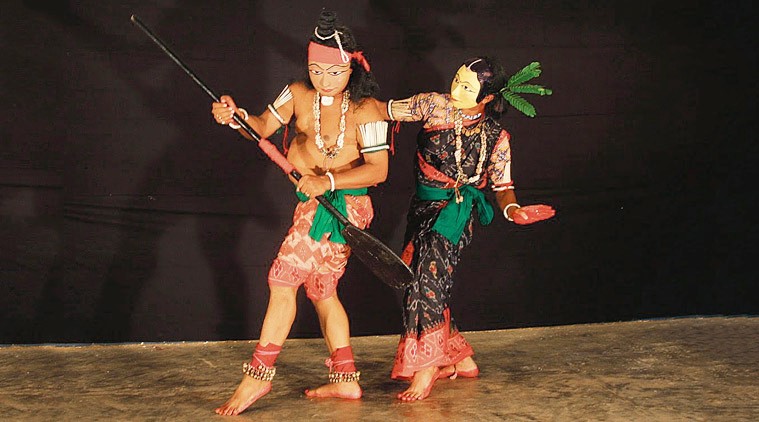Out of Step
Why Odisha’s chhau dance remains a neglected form.
 The Beat: The masked dance form is performed to celebrate the harvest.
The Beat: The masked dance form is performed to celebrate the harvest.
Deep amid the mineral-rich mountains of Odisha’s Keonjhar district, village elders at Asanpata village gathered last fortnight to mourn the shrinking possibilities of chhau dance. A lack of state patronage and the younger generation’s interest in “modern” entertainment were the chief culprits, they said, pointing at a group of adolescents hunched over a mobile phone.
“We are rarely called to perform at government functions. In comparison, Odissi dancers receive much of the limelight,” says Pehana Nayak, 85, a chhau dancer who still performs in the village. “Tagged as ‘folk’ dancers, we are limited to local performances and festivities.”
Earlier this month, the Sangeet Natak Akademi honoured the Jharkhand-based chhau artiste Guru Tapan Kumar Pattanayak, 57 — a recognition for the dance that has come after a long while.
“In 1973, our chhau troupes were recognised under The Societies Registration Act and we were able to apply for small grants from the Odisha government. But since 2008, we have stopped receiving financial support. This has contributed to deterioration of the art form,” says Nayak, holding a smudged copy of a 2009 petition to the state government for resumption of grants.
In Asanpata village, in Jhumpura block of Keonjhar district, one of the three places in Odisha known for the form, chhau nrutya is performed around the temple of the local goddess on Pana Sankranti every April, to celebrate the kharif harvest.
Scholars have pointed to social and cultural capital of some communities to explain why some dances (like Odissi) received classical status over others (like chhau). Odissi dancer Sharon Lowen says, “In the West, classical and folk dance forms are distinguished, as folk can be done by everyone, doesn’t have an expansive vocabulary and is practised communally, say, for the coming of rains. The classical dance audience includes god, king or public, has an elaborate vocabulary, and the level of skill restricts the number of people who can perform it. If I’m to use these categories, then chhau certainly can be a classical dance form.”
The masked dance form is classified into three styles — Mayurbhanj chhau (Odisha), Seraikella chhau (Jharkhand) and Purulia chhau (West Bengal), and further as “militaristic” or “poetic”, depending on the stories it tells of war or love.
To be recognised as a classical dance form in India, Lowen says, a dance requires a scholar to codify the form and propagate it through writings, organise elaborate academic seminars to agree on its theory and have a link to gatekeeper institutions that will determine its status. Lowen recalls how even Odissi faced questions about its accompanying music, believed to draw from Hindustani and Carnatic traditions. In Odisha, chhau also lacks serious scholars theorising and standardising its framework.
In 2017-18, the NDA government decided to honour Odisha’s Paika Bidroha (peasant-militia revolt) of 1817 against the British Empire. “We lost an opportunity to lobby for support for chhau, which is intimately connected with Paika culture”, says Sadasib Pradhan, 64, an Odisha-based chhau artiste.
Tapan Pattanayak, director of Chhau Dance Centre, set up by the Jharkhand government, and the Sangeet Natak Akademi awardee, says, “Chhau is intrinsically Odia with distinct connection to the Jagannath culture.” “In Odisha, the chhau centre at Baripada relies on donations rather than government funds,” he says, adding that a lot more can be done to promote it in the state. Andhra Pradesh, for instance, is making efforts to have Vilasini Natyam recognised as a classical dance form, says Pattanayak.































